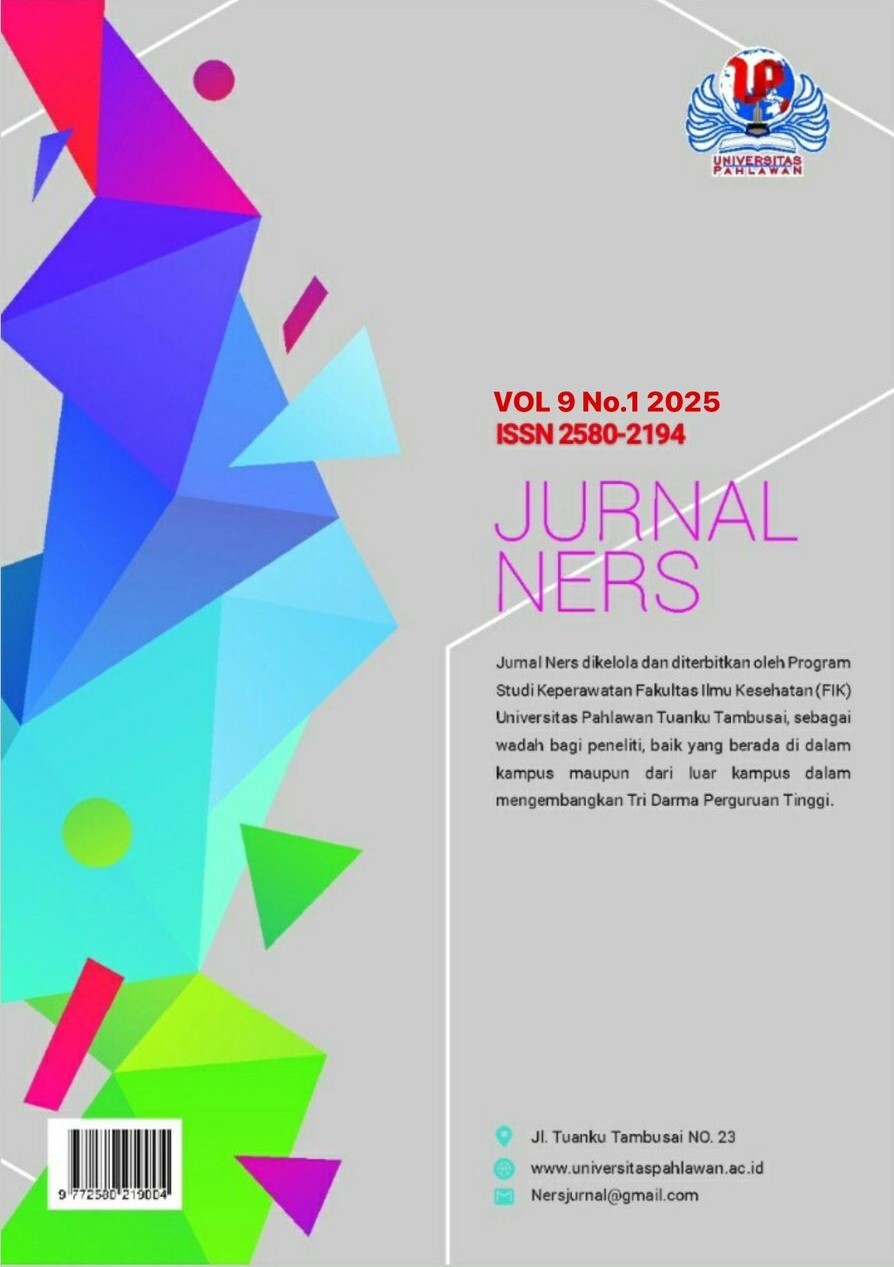Efektivitas Emotional Freedom Technique Terhadap Kualitas Tidur Pasien Hemodialisis di Rumah Sakit Khusus Ginjal Rasyida Medan
DOI:
https://doi.org/10.31004/jn.v9i1.30819Abstract
Salah satu aspek penting masalah yang dialami pasien hemodialisis adalah kualitas tidur yang buruk. Salah satu terapi komplementer yang dapat digunakan untuk meningkatkan kualitas tidur adalah Emotional Freedom Technique (EFT). Tujuan penelitian ini adalah untuk menganalisis efektivitas EFT terhadap kualitas tidur pada pasien hemodialisis. Metode yang digunakan adalah quasi experimental design nonequivalent control group pretest posttest design. Pengambilan sampel menggunakan non probability sampling dengan metode convenience sampling. Responden dalam penelitian ini adalah pasien hemodialisis yang berjumlah 58 orang. Data dianalisis menggunakan wilcoxon signed rank test dan mann whitney u test. Hasil penelitian menunjukkan bahwa terdapat perbedaan rata-rata kualitas tidur pada kelompok intervensi dan kontrol dengan nilai p-value=0.003 (p<0,05). Ketukan yang diberikan selama EFT dapat mengirimkan sinyal ke area otak yang dapat meningkatkan serotonin serta mengurangi kortisol dalam tubuh sehingga menimbulkan rasa tenang. Kesimpulan diketahui Emotional Freedom Technique efektif terhadap kualitas tidur pada pasien hemodilisis dan disarankan dapat menjadi pilihan dalam intervensi keperawatan untuk meningkatkan kualitas tidur pada pasien hemodialisis.Downloads
Published
2024-11-03
How to Cite
Flora, M., Tanjung, D. ., & Karota, E. . (2024). Efektivitas Emotional Freedom Technique Terhadap Kualitas Tidur Pasien Hemodialisis di Rumah Sakit Khusus Ginjal Rasyida Medan. Jurnal Ners, 9(1), 60–66. https://doi.org/10.31004/jn.v9i1.30819
Issue
Section
Articles
License
Copyright (c) 2024 Jurnal Ners

This work is licensed under a Creative Commons Attribution-ShareAlike 4.0 International License.
Authors who publish with this journal agree to the following terms: Authors retain copyright and grant the journal right of first publication with the work simultaneously licensed under a Creative Commons Attribution-ShareAlike 4.0 International License that allows others to share the work with an acknowledgement of the works authorship and initial publication in this journal. Authors are able to enter into separate, additional contractual arrangements for the non-exclusive distribution of the journals published version of the work (e.g., post it to an institutional repository or publish it in a book), with an acknowledgement of its initial publication in this journal. Authors are permitted and encouraged to post their work online (e.g., in institutional repositories or on their website) prior to and during the submission process, as it can lead to productive exchanges, as well as earlier and greater citation of published work (See The Effect of Open Access).







